INTRODUCTION
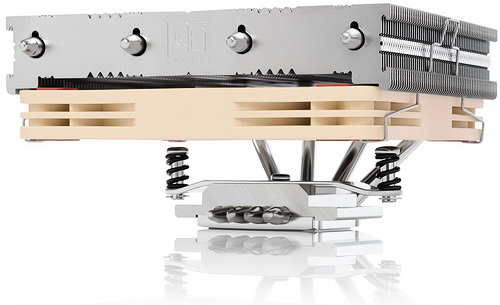
While most people i know are into "regular" sized desktop systems and thus are always interested in the latest AIO (all-in-one) liquid CPU coolers and/or the latest high-end (and quite massive) air coolers there are many who are looking to build small mini-ITX based systems (mostly for use as HTPCs) and who are in turn interested in compact coolers. Unfortunately nowadays not that many manufacturers are into such cooling solutions and although in the past that wasn't the case (far more available choices) today it's somewhat hard to find a compact CPU cooler worth of your attention. Noctua is among a handful of CPU cooler manufacturers still focusing in the development of compact models and just over 5 years since the introduction of their award winning NH-L12 they have released the NH-L12S which is here with us today.
Designed in Austria, Noctua’s premium cooling components are internationally renowned for their superb quietness, exceptional performance and thoroughgoing quality. Having received more than 6000 awards and recommendations from leading hardware websites and magazines, Noctua’s fans and heatsinks are serving hundreds of thousands of satisfied customers around the globe.
When the NH-L12 low-profile CPU cooler was launched just over 5 years ago it was the only of its kind to feature two premium fans one 120mm (NF-F12) at the top and one 92mm (NF-B9) one at the bottom so performance although not stellar was far better compared to similar compact solutions. The only tiny drawback (if you can even call it that) the NH-L12 had was its height which with the top 120mm fan mounted came up to 93mm. The easy way to resolve that was to remove the top 120mm fan (in which case the height of the cooler fell to 66mm) but the bottom 92mm fan alone was not nearly enough to produce satisfying results (at least not when tested with our test rig). Since the new NH-L12S replaces the NF-B9 fan with Noctua's latest NF-A12x15 slim 120mm premium fan however it should offer better cooling efficiency. The only question is just how the new single fan NH-L12S compares to the original dual fan NH-L12 so let's find out.
SPECIFICATIONS AND FEATURES

PACKAGING AND CONTENTS
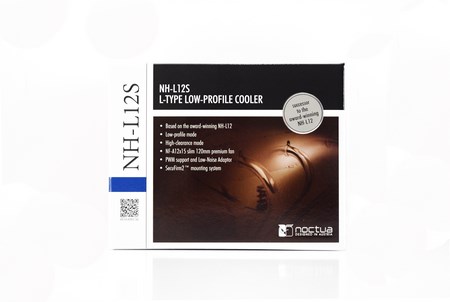 Once again at the front of the box used by Noctua we find the main product features and a partial picture of the cooler itself in the background.
Once again at the front of the box used by Noctua we find the main product features and a partial picture of the cooler itself in the background.

 The product specifications are placed on the left side of the box while its features are placed on the right.
The product specifications are placed on the left side of the box while its features are placed on the right.
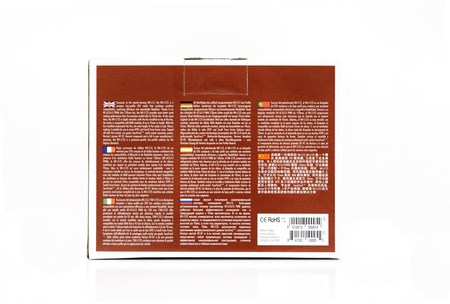 A few words about the new NH-L12S low-profile CPU cooler are placed at the rear in 8 languages.
A few words about the new NH-L12S low-profile CPU cooler are placed at the rear in 8 languages.
 As usual the bundle is placed in another cardboard box with drawings of its contents at the top.
As usual the bundle is placed in another cardboard box with drawings of its contents at the top.
 Contained inside the box is the NH-L12S heatsink with the NF-A12x15 slim 120mm fan attached, NT-H1 thermal paste tube, long Philips screwdriver, low-noise adapter, metal case badge, backplate, installation instructions (3 manuals) and all the necessary bits and pieces to mount the NH-L12S on to Intel LGA 1150/1151/1155/1156/2011/2011-3/2066 and AMD AM2/AM2+/AM3/AM3+/AM4/FM1/FM2/FM2+ compatible mainboards.
Contained inside the box is the NH-L12S heatsink with the NF-A12x15 slim 120mm fan attached, NT-H1 thermal paste tube, long Philips screwdriver, low-noise adapter, metal case badge, backplate, installation instructions (3 manuals) and all the necessary bits and pieces to mount the NH-L12S on to Intel LGA 1150/1151/1155/1156/2011/2011-3/2066 and AMD AM2/AM2+/AM3/AM3+/AM4/FM1/FM2/FM2+ compatible mainboards.
THE NH-L12S
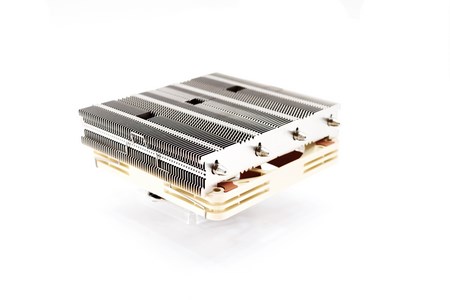 The brand new NH-L12S weighs a total of 520g (390g without the fan) and measures a total of 70mm in height, 128mm in width and 146mm in depth.
The brand new NH-L12S weighs a total of 520g (390g without the fan) and measures a total of 70mm in height, 128mm in width and 146mm in depth.
I've always liked the Noctua logo at the front fin and I’m glad they are keeping the tradition alive.
 Thanks to the bundled long Philips screwdriver and these three holes at the top of the heatsink mounting the NH-L12S onto any mainboard is extremely easy.
Thanks to the bundled long Philips screwdriver and these three holes at the top of the heatsink mounting the NH-L12S onto any mainboard is extremely easy.
 Noctua has placed a total of 58 aluminum fins on the body of the NH-L12S (8 less compared to the original NH-L12).
Noctua has placed a total of 58 aluminum fins on the body of the NH-L12S (8 less compared to the original NH-L12).
Just like the original NH-L12 the NH-L12S features a total of four 6mm nickel plated copper heatpipes.
The nickel plated base is polished but not what we'd call a mirror-like finish.
While the original NH-L12 used the NF-B9 92mm fan (1600RPM/37.8CFM/17.6dBA) at the bottom the new NH-L12S uses the latest NF-A12x15 slim 120mm model (1850RPM/55.4CFM/23.9dBA). By default the fan faces upwards but you can change that according to the airflow inside your case (due to the high airflow levels of our test rig we performed all tests as is).
TEST BED
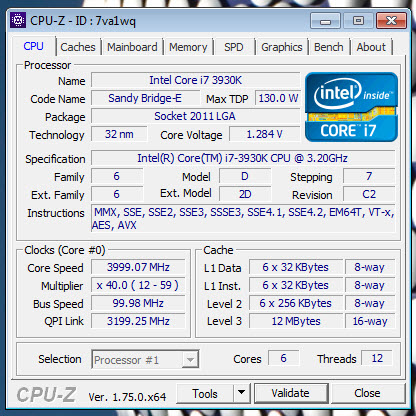

TESTING METHODOLOGY
We always take things quite seriously when it comes to work so just like with the previous LGA1366 database we will not be testing each CPU Cooler on its own and with different ambient temperature levels and thus we can actually have yet another valid CPU Cooler database. Testing a CPU Cooler automatically means that you need to know where it stands against the immediate competition and to accomplish that we have spent both money and time through the years, something that we plan to continue to do so in order to get the most accurate results for the end consumers who read these lines. Every CPU cooler in this database is tested with the bundled 140mm/120mm/92mm/80mm fans while working at both idle speed and 100% of their speeds for all the temperature tests. CPU Coolers that do not come bundled with a fan/s are measured using a Noctua fan (size dependent on the model) to test for the temperature tests but due to the lack of a stock fan dBA level tests are obviously skipped. Single (120/140mm) watercooling solutions are tested with the radiator mounted at the rear of our test rig while dual/triple/quad (240/260/280/360/420/480/560mm) solutions with the radiator mounted at the top. For the dBA tests every cooler in the database was measured both while on idle mode or with the fan controller in the minimum setting and while on extreme load or with the fan controller all the way to the highest possible setting (PWM fans do that on their own without our intervention). Every single test takes place in a temperature controlled room of 23 degrees Celsius Ambient Temp with the help of two AC units placed diagonally inside the room. The Arctic Silver 5 thermal paste is used with every CPU Cooler in our latest LGA2011 database (although initially this was not the plan we had to change things to get the most accurate results). Finally it's very important to point out that just because a CPU Cooler is better than another when tested with our test rig that does not necessarily mean that the same performance differences will apply 100% for other CPU models and in other situations (such as different ambient temps and system configurations).
To successfully record the load temperatures we use the latest OCCT application for around 6-10 minutes to push the processor to its limits and after that is done and the temperatures are recorded we wait for about 10-20 minutes for the CPU to cool down and record the idle temperatures. This is done to allow time for the thermal conductive material to achieve the optimal performance level. Same procedure is then repeated with the Passmark BurnIn Test as a failsafe just in case the OCCT results are wrong. This procedure takes a lot more time than the usual peltier/thermometer tests but this way not only can we deliver real world results to our readers based on real CPUs but we can also triple check the results using a variety of programs. Last but not least the temperatures were recorded using both the latest versions of AIDA64 and RealTemp while the noise level tests are performed using a high precision ExTech HD600 Decibel Meter placed about 10-15cm above the CPU Cooler. Still although the same testing procedure applies to all units do take into consideration that unlike the official numbers which are measured in special noise isolated labs with just the fans here we also have both the rest of the cooler and the rest of the system (although all system fans are turned off when recording noise levels).
TEST RESULTS


CONCLUSION
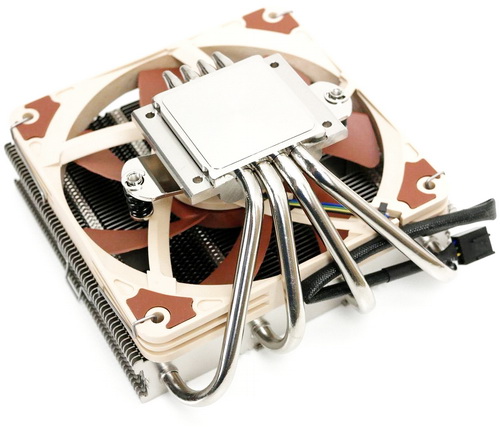
When Noctua launched the NH-L12 we were quite skeptical about using our primary rig to test it and although load results well exceeded the 60 degrees temperature mark our system kept going. For good or bad the brand new NH-L12S does not surpass its predecessor in cooling efficiency and that’s something we were expecting right from the start since simply put you can’t compare a dual fan solution with a single fan solution when the heatsink used is almost identical. Granted the NF-B9 92mm fan on its own didn’t offer much to the original NH-L12 but combined with the NF-F12 these two had a much higher impact than the new NF-A12x15 slim 120mm model. Luckily the NF-A12x15 may be a bit louder (still nearly inaudible) but it offers very good results considering it’s a 15mm slim model. Now the good news is that noone is keeping you from either adding a 2nd fan at the top (providing you get extra mounting clips) or replacing the NF-A12x15 fan (15mm thick) with a regular (25mm thick) 120mm fan but in both cases the height of the cooler would increase substantially. That being said the NH-L12S with its NF-A12x15 fan should easily outperform the NH-L12 with just the NF-B9 fan (unfortunately we never did test the original NH-L12 with just the NF-B9).
Consumers have always paid a small justified premium for Noctua products due to their very high quality and the NH-L12S is really no exception since it currently retails for USD49.90 inside the USA (Amazon.com) and for 50Euros inside the EU (Amazon.co.uk). Sure there are many low-profile CPU coolers that cost less than the NH-L12S but you will have a really hard time finding one that combines its size, quality noise levels and performance which is also why we give it our Golden Award.

PROS
- Build Quality
- Good Performance (For Its Size)
- Just 70mm Tall (Low Profile)
- Noise Levels
CONS
- Not Quite As Good As The Original NH-L12

 O-Sense
O-Sense











.png)

